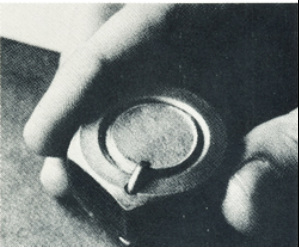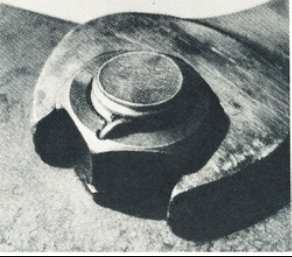
How It Works
Put it on a bolt.
During tightening, the locking pin on a Coloc Lock Nut acts as a ratchet, sliding along the bolt threads making a sharp point of contact at an desired position on the bolt. Because of the angle of the pin, the nut is effectively prevented from backing off or loosening, even under shock or extreme vibration.
Put it on a bolt.
During tightening, the locking pin on a Coloc Lock Nut acts as a ratchet, sliding along the bolt threads making a sharp point of contact at an desired position on the bolt. Because of the angle of the pin, the nut is effectively prevented from backing off or loosening, even under shock or extreme vibration.

Torque It and Forget It
The nut is fitted with a special stainless steel locking pin made of high tensile spring wire. After the locking pin has been swaged into position, the contact end is ground to match the thread form of the bolt to insure maximum locking characteristics.
A properly installed nut will not back off as long as the locking pin is in position
The nut is fitted with a special stainless steel locking pin made of high tensile spring wire. After the locking pin has been swaged into position, the contact end is ground to match the thread form of the bolt to insure maximum locking characteristics.
A properly installed nut will not back off as long as the locking pin is in position

Reverse it
Sufficient leverage can be applied with a hand wrench to reverse the direction of the pin for removal without damaging either the nut or the bolt
Sufficient leverage can be applied with a hand wrench to reverse the direction of the pin for removal without damaging either the nut or the bolt